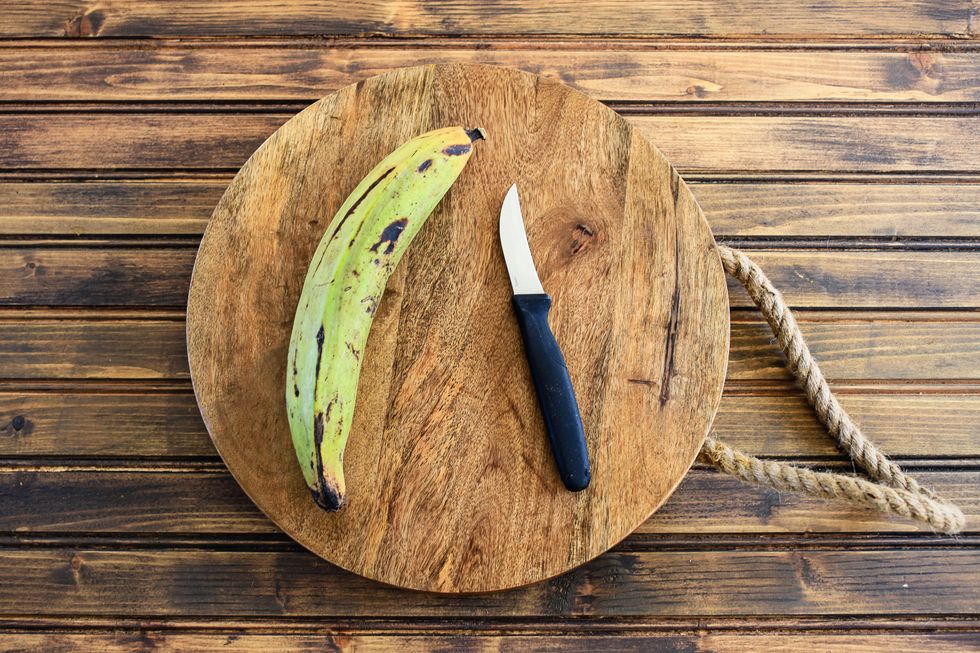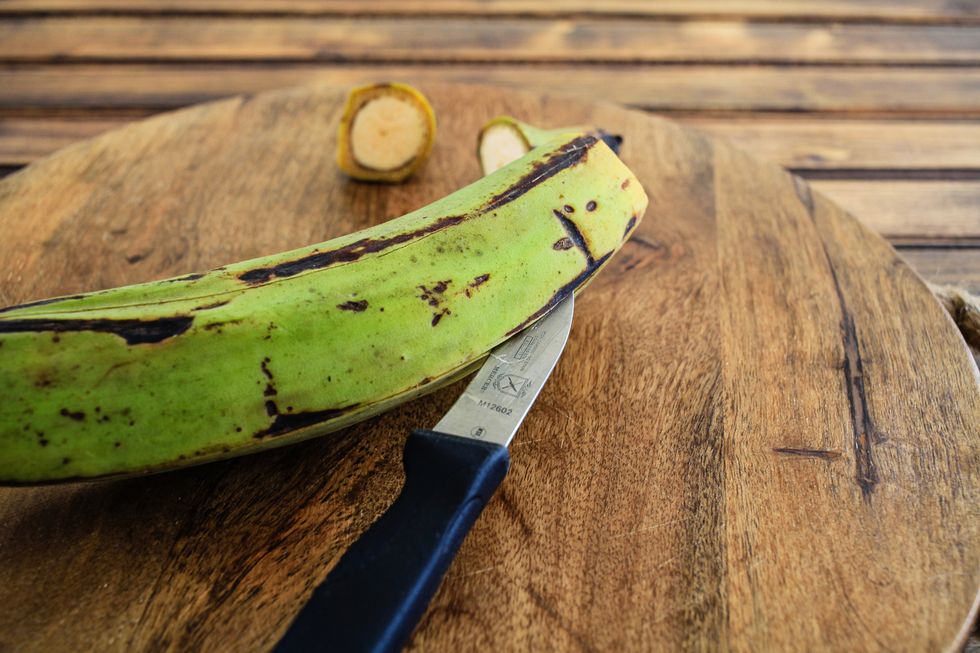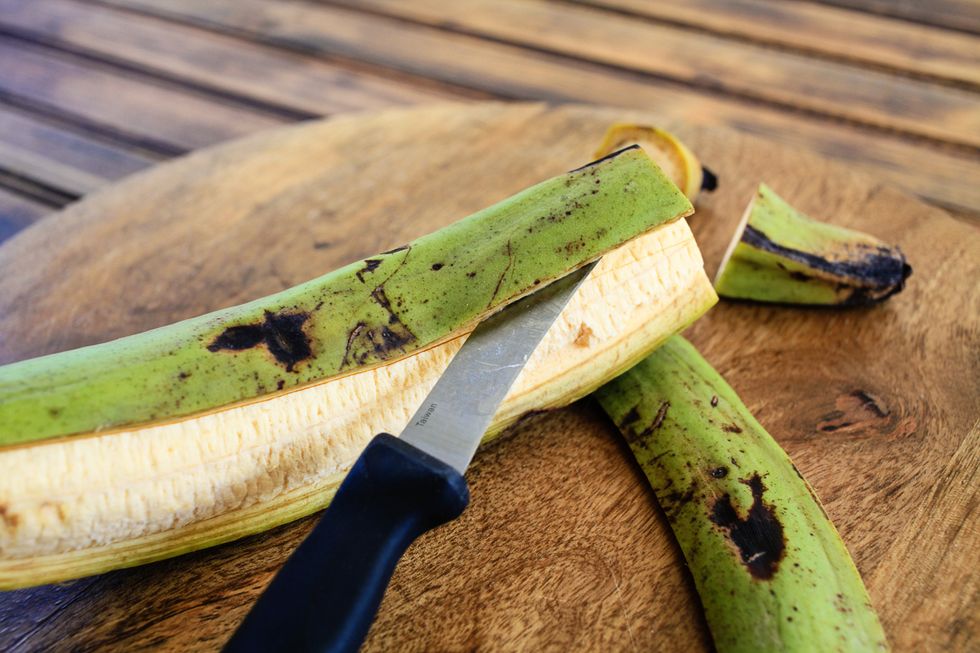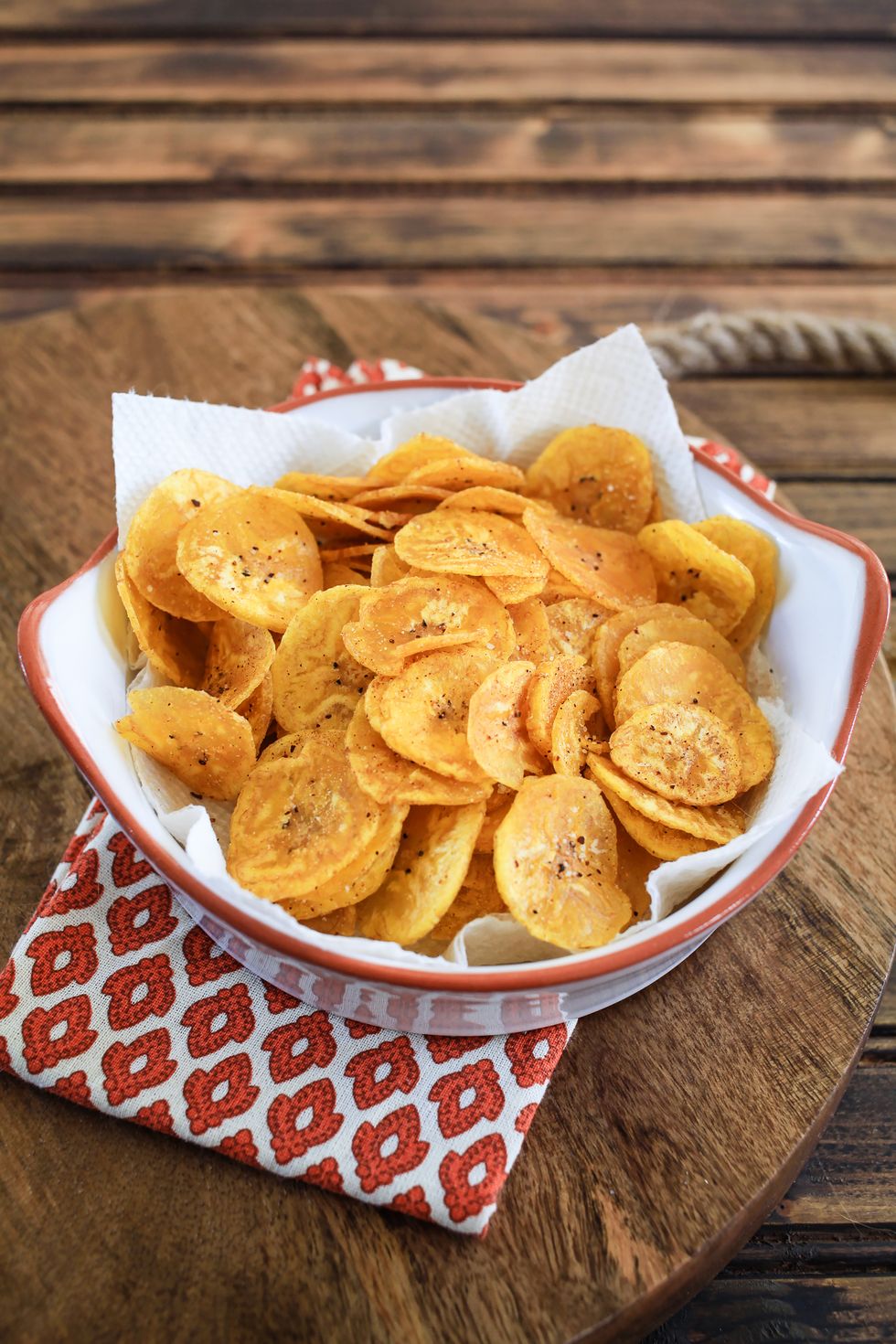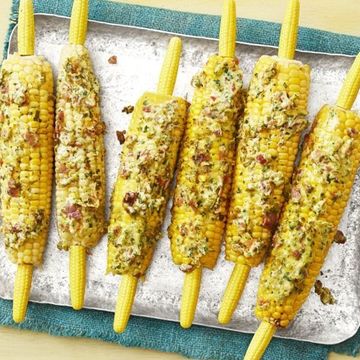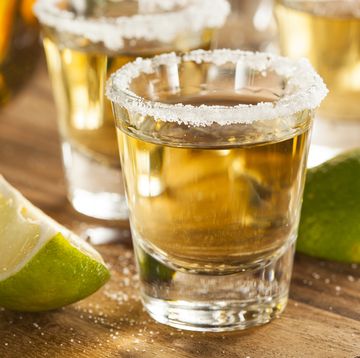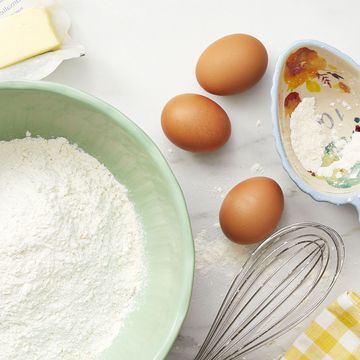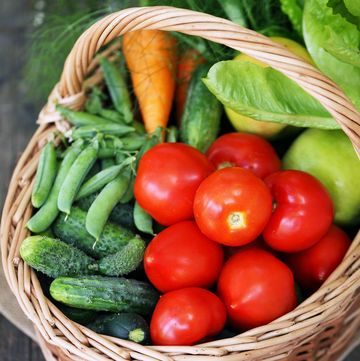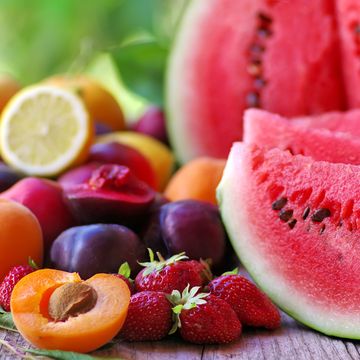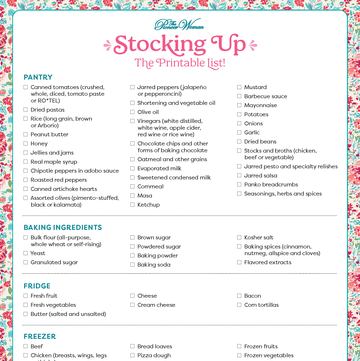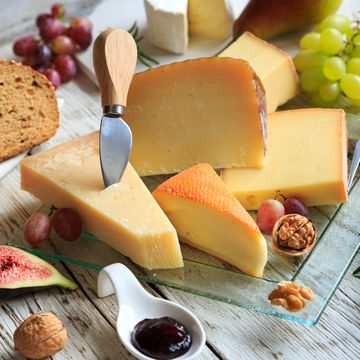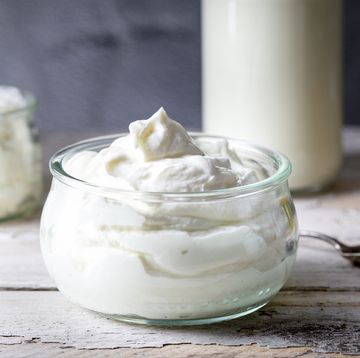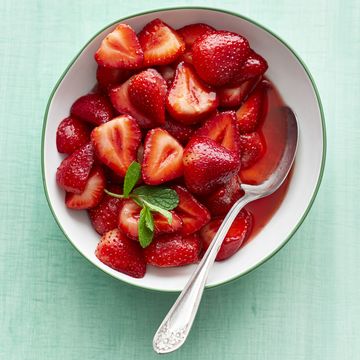You may have seen these before in the tropical fruit section of your grocery store. You know, where the pineapples and coconuts hang out? At first glance, it looks like a banana. But when you pick it up, you realize it’s bigger, firmer and has a thick skin. It’s not a banana—it’s a plantain.
I’m originally from Puerto Rico, so I’ve pretty much been eating plantains all my life. It’s one of the ingredients I’m asked about the most. I think most people are confused because it looks so much like a banana but it doesn’t peel like a banana, taste (much) like a banana, and it isn’t eaten like a banana. The plantain is a starchy cousin of the banana, and all that added starch means it almost always needs to be cooked before it can be eaten.
Plantains hold a special place in my heart. As a child, I’ve had many a dinnertime battle over the last tostone (fried plantain). In fact, as much as I’ve moved around in my adult life, I always joke and say I’ll live anywhere as long as I am within a 5-mile radius of plantains.
Where do plantains come from?
Plantains can be found all over the Caribbean and Central America, but they were not always native to these areas. Plantains are indigenous to the tropical regions of Southeast Asia. They made their way along trade routes to Africa and then were brought to the Caribbean by the Spanish and African slave traders. The plantain eventually became a staple ingredient in the Caribbean.
How do I peel plantains?
Peeling a plantain is not like peeling a banana. Especially when it’s green. Let’s peel a green plantain!
You need a plantain and a paring knife.
First, cut the ends of the plantain.
Score the skin, trying not to cut into the flesh itself. Do this along the “seams” of the plantain, a total of 4 times.
Then put the blade of the knife into one the “slices” and pry the skin up, like so. Again, try your best not to cut the plantain itself.
Once you have pried off an entire section of the peel, you can pry the rest of the skin by lifting it and running your fingers under the skin. The skin will come off in 4 whole pieces. Be patient your first time and try not to use your nails, because it can get nasty and it can hurt you under your nails. Trust me, I’ve made this rookie mistake. If you have trouble prying it with your fingers, just use the knife again.
Tada! You have a peeled plantain!
As a plantain ripens, its skin becomes leathery, so it’s still difficult to peel like a banana. Although a ripe one is easier to peel than a green one, it’s still best to follow the same steps above.
How do I know if a plantain is ripe?
I’ve been talking about ripe plantains, but how do you know a plantain is ripe? Many people think a ripe plantain is a plantain that has gone bad, but that’s when they are their sweetest! A ripe plantain is best when it’s mostly black with a little yellow, and still slightly firm to the touch, like when you squeeze a peach. Although completely black plantains are still good to eat, they are a little too soft, making them difficult to prepare. But they’re still delicious.
It’s usually hard to find ripe ones at the grocery store. Typically, plantains have to be purchased green and left to ripen on the counter. Depending on the time of year and temperature, they can take anywhere from a few days to a week to ripen. If you’re in search of ripe plantains, your best bet would be your local Asian or Latin market.
How do I eat a plantain?
The question should be how not to eat a plantain! There are many, many ways to eat a plantain and it all depends on where it lands on the ripeness scale. This is why I affectionally call it “the incredible edible plantain.”
The simplest preparation for plantains, green or ripe, is fried. When green, they are very starchy and are best served as tostones, which are twice-fried plantains. They can also be thinly sliced and fried to make chips. As they ripen, the starches turn into sugars, and when fried, the sugars caramelize and create sweet crispy edges.
What do plantains taste like?
I think they taste like heaven, but that could be because I’m biased. As I’ve mentioned before, my favorite is tostones—crispy on the outside and starchy on the inside, kind of like french fries. I like to dip my tostones in fry sauce.
Ripe plantains are sweet like a banana, without the banana flavor. They can be eaten raw but are best when fried. The edges caramelize and become crispy like the edges of pancakes cooked in butter. Those edges are my favorite! I love to pair fried sweet plantains with a side of beans and rice.
Plantain chips make a great crispy snack. When I was in high school, I used to order a bag of plantain chips and a cold Malta for my afternoon snack. Best snack ever.
So grab some plantains and trying your hand at making plantain chips! I’ve included a recipe here for garlic-flavored chips, but they’re equally wonderful with a simple sprinkle of salt or lime zest, cayenne, or chili powder. Trust me, you can’t just eat one.

